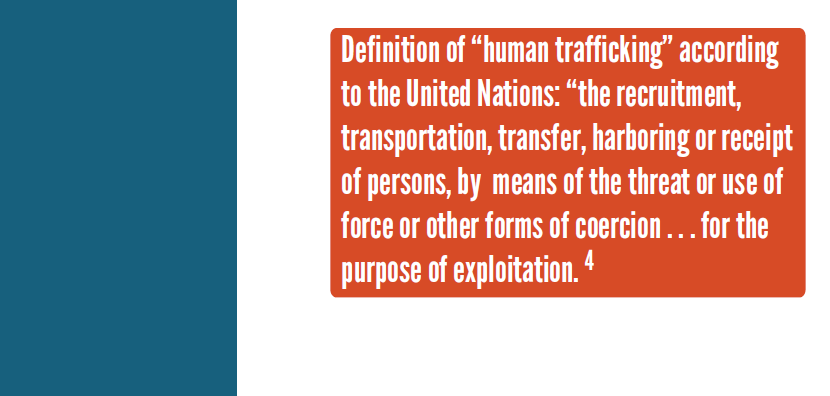MATTOO: Extinguishing the Flames
Intro



Dear Reader,
We hope this finds you well and with an open heart and mind to see the issues of human sex trafficking as they are instead of how most cultures have incorrectly portrayed them. Since 2010, MATTOO has been educating anyone who wants to listen about the shocking reality of trafficking all around them. After learning these facts and the simple actions and inactions people can do to help, the average person who may have sat passively by is now incapable of sitting in silence. And the one who dabbled in what they thought was innocent curiosity is now shocked by the realities of what that contributed to and have stopped their actions and helping others to do the same.
Since you are reading this content, you are clearly interested in learning more about trafficking and as such, definitions are key for us to have a common understanding.

0.1 Definition of “Trafficking”
‘Human trafficking’ and ‘Trafficking in persons’ have been used as umbrella terms for the act of recruiting, harboring, transporting, providing, or obtaining a person for compelled labor or commercial sex acts through the use of force, fraud, or coercion. 6 The Trafficking Victims Protection Act (TVPA) defines sex trafficking as “the recruitment, harboring, transportation, provision, obtaining, patronizing, or soliciting of a person for the purpose of a commercial sex act.” (7 The Victims of Trafficking and Violence Protection Act of 2000, Public Law 106–386, 114 STAT. 1464, http://www.state.gov/documents/organization/10492.pdf (accessed February 28, 2014).
Although many cases of sex trafficking involve the transport of human beings from one location to another, sex trafficking “does not require movement. People may be considered trafficking victims regardless of whether they were born into a state of servitude, were transported to the exploitative situation, previously consented to work for a trafficker, or participated in a crime as a direct result of being trafficked.” (11. Office to Monitor and Combat Trafficking in Persons, “Trafficking in Persons Report 2012” (U. S. Department of State, 2012), 33, http://www.state.gov/documents/organization/192587.pdf (accessed November 9, 2013).
We have a simple yet profound saying in MATTOO, “If there were no buyers, there would be no sellers. And if there were no sellers, there would be no victims.”
It really is that simple - No buyers, no victims.



In other words, human trafficking is the enslavement of others. It is the buying and selling of human beings as a commodity. And sex-trafficking is the enslavement of others with the expressed purpose to sell them for commercial sex.
It’s a common belief that sex trafficking would end if every country were to do these few things:
- Rescue every trafficked victim
- Imprison every trafficker
- Arrest every “John” (the men who use trafficked victims)
Though these would be seen as positive steps - yet even if all these things happened, sex trafficking would begin again because there would still be a demand. And when there is a demand, a supply will be created.
This simple phrase bears repeating, “No buyers, no victims.”
0.2 Magnitude of Trafficking
Although the facts and figures about trafficking are valuable, the numbers alone cannot adequately communicate the true atrocities faced by millions of women and children every day of their lives. These facts cannot convey the hopelessness or desperation that colors the lives of those enslaved by the commercial sex trade industry.
It is important to note that when it comes to the issue of sex trafficking, there are a lot of numbers associated with how many people are involved, how much money is generated, how many victims are children, etc. These numbers attempt to estimate the scope of the issue. In reality, the actual statistics are often unavailable and may seem contradictory due to the covert nature of the crime, the invisibility of victims, and high levels of under-reporting. Other obstacles include the use of inconsistent definitions, reluctance to share data, and a lack of funding for research and standardization of data collection. The fact is these numbers attempt to be conservative and will always be approximate, but most importantly it needs to be remembered that they represent true people and any amount is too high.
0.3 About This Book
When confronted with the magnitude of human trafficking, people normally have go between two emotions:
1. We feel so mad we want to bust down doors to stop trafficking.
2. We feel so overwhelmed we say, “What could I possibly do?” and feel overwhelmed and paralyzed to do anything.
It’s important to know these feelings are completely normal and to pace yourself on this journey so you have the stamina for the long term.
There’s a great African proverbs that says, “If you want to run fast, run alone. If you want to run far, run together.”
If we focus our efforts and work together, we can participate in the eradication of the demand for sex trafficking.
Since everyone has a unique capacity to speak to and influence others, this wbook is intended to equip everyone to participate in the solution.
The following five sessions (and the epilogue “Final Thoughts”) are designed to equip you by understanding:
1. the Global Context (Chapter 1)
2. the Traps of trafficking (Chapter 2),
3. the Industry Context of trafficking (Chapter 3),
4. the Infrastructure of trafficking (Chapter 4),
5. the Solutions to stop trafficking (Chapter 5),
6. a wrap up with Final Thoughts (Chapter 6)
Throughout this book, we will address common myths (i.e. the kindling) that fuels the flames of trafficking. The myths surrounding sex trafficking and prostitution are far too numerous to completely cover in this book. We intend to address some of the most common and powerful myths in an effort to assist driving the awareness of the truth into cultures. Some of these key myths we will cover are the following:
• Most people enter prostitution by choice.
• Slavery is an issue of the past.
• Sex trafficking only (or primarily) exists in underdeveloped countries.
• A small percentage of human trafficking victims are sold into the sex trade industry.
• Prostitution is a victimless crime.
• Most prostituted individuals are “in-business” for themselves.
• Prostituted individuals can leave when they choose.
• A small percentage of boys and girls are forced into prostitution.
• Legalizing prostitution would rid the industry of its criminal elements.
• Legislation designed to decrease the sex trade is ineffective.
0.4 About MATTOO



MATTOO (pronounced |matˈtoo|) is an international organization that uses education to empower all people to stop human sex trafficking at its source - the demand.
Established in 2010, MATTOO is the first of its kind 501(c)3 nonprofit organization that solely exists to decrease the demand of human sex trafficking.
Our Vision: A world without sex trafficking.
Our Mission: To accelerate the world towards slowing down, then plateauing, then eliminating the demand of sex trafficking.



The goal of MATTOO is to change the hearts and minds of mankind in order to eliminate the demand for sex trafficking. Our task is formidable, however, we are confident a difference will be made, because are seeing the positive change occur where this educational content is shared.
As Margaret Mead, a cultural anthropologist, stated - “Never doubt that a small group of thoughtful, committed, citizens can change the world. Indeed, it is the only thing that ever has.”

Never doubt that a small group of thoughtful, committed, citizens can change the world. Indeed, it is the only thing that ever has.

This is the journey we are on and if you choose, we welcome you to be a part of the thoughtful and committed individuals who are out to help change the world in our generation.
Until that day,
Andrew D. Hanson
Founder & Chairman of MATTOO


